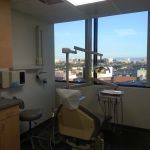- 1-Understanding-Dental-Bridges-and-Post-Surgery-Care
- 2-Immediate-Care-Tips-After-Dental-Bridge-Surgery
- 3-Daily-Maintenance-for-Dental-Bridges
- 4-Foods-to-Avoid-and-Nutrition-Tips
- 5-Common-Challenges-and-How-to-Handle-Them
- 6-Professional-Checkups-and-When-to-Seek-Help
1. Understanding Dental Bridges and Post-Surgery Care
Dental bridges are an effective solution to replace missing teeth, restoring both function and aesthetics. After surgery, proper care for dental bridges is crucial to ensure healing, longevity, and overall oral health. The process involves not just the surgical site but also the surrounding teeth and gums that support the bridge.
The initial recovery phase requires special attention to avoid infection, reduce discomfort, and promote tissue healing. Patients often wonder how to care for dental bridges after surgery to protect their investment and avoid complications. This care involves both immediate post-surgical guidelines and long-term maintenance routines.
2. Immediate Care Tips After Dental Bridge Surgery
Right after dental bridge surgery, the mouth can be sensitive and prone to inflammation. Applying gentle ice packs on the outside of the cheek for 15-minute intervals helps reduce swelling and discomfort. Avoid rinsing or spitting vigorously for at least 24 hours to protect the surgical site and blood clots that are vital for healing.
Patients should adhere strictly to any antibiotic or pain medication prescribed by their dentist to prevent infection and manage pain effectively. Sleeping with the head elevated can also minimize swelling and promote faster recovery.
It’s important to avoid smoking or using straws, as suction can disturb the healing tissue. Drinking plenty of water and resting will support the body’s natural healing mechanisms.
3. Daily Maintenance for Dental Bridges
Once initial healing has taken place, maintaining excellent oral hygiene is essential to protect dental bridges and the supporting teeth. Brushing at least twice a day with a soft-bristled toothbrush and fluoride toothpaste helps remove plaque and prevent decay around the bridge.
Flossing is equally important but requires technique adjustments. Using floss threaders or interdental brushes can help clean beneath the pontic (the false tooth) where regular floss may not reach. Neglecting this can lead to gum disease and compromise the bridge.
Incorporating mouth rinses recommended by your dentist can further reduce bacteria and keep your gums healthy.
4. Foods to Avoid and Nutrition Tips
Diet plays a pivotal role in recovery and long-term success of dental bridges. Immediately after surgery, soft foods like yogurt, mashed potatoes, and smoothies are ideal to prevent irritation. Avoid hot, spicy, or acidic foods which may inflame the healing tissues.
In the longer term, avoiding very hard or sticky foods such as nuts, hard candies, or chewing gum protects the bridge from undue pressure or damage. Balanced nutrition rich in vitamins A and C supports tissue repair and immune function.
Staying hydrated and limiting sugary snacks also minimizes the risk of decay around the bridge.
5. Common Challenges and How to Handle Them
Some patients experience sensitivity, discomfort, or slight looseness after dental bridge surgery. Mild soreness is normal and can be managed with over-the-counter pain relievers, but persistent pain or swelling should be promptly evaluated.
Food getting trapped under the bridge is a frequent complaint, which underscores the importance of daily cleaning techniques. If gaps or looseness develop, contacting your dentist quickly prevents further issues.
Regularly inspecting your dental bridge for chips, cracks, or unusual changes helps catch problems early. Patients who share stories of consistent maintenance often report longer-lasting bridges with fewer complications.
6. Professional Checkups and When to Seek Help
Regular dental visits are essential after dental bridge surgery. Dentists check for proper fit, gum health, and signs of wear or damage. They may perform professional cleanings to remove plaque that home care can miss.
Immediate dental consultation is advised if you notice severe pain, persistent swelling, bleeding, or if the bridge feels loose or damaged. Early intervention can save the bridge and protect surrounding teeth.
For personalized advice, product recommendations, or to find trusted dental professionals, visiting Dentistry Toothtruth is a great resource for comprehensive post-surgical care information.







 That Broadway Smile5.0 (1689 review)
That Broadway Smile5.0 (1689 review) East Greenwich Family Dental | Dentist in East Greenwich RI | DMD4.0 (182 review)
East Greenwich Family Dental | Dentist in East Greenwich RI | DMD4.0 (182 review) Dr. Albert R. Arcand, DMD4.0 (22 review)
Dr. Albert R. Arcand, DMD4.0 (22 review) Dental Implants and Periodontology of Massapequa4.0 (198 review)
Dental Implants and Periodontology of Massapequa4.0 (198 review) Brick Dental Studio4.0 (101 review)
Brick Dental Studio4.0 (101 review) Claire L. Ho, DDS5.0 (5 review)
Claire L. Ho, DDS5.0 (5 review) The Importance of Oral Health Education During Pregnancy for a Healthy Pregnancy
The Importance of Oral Health Education During Pregnancy for a Healthy Pregnancy Best Tips for Brushing Your Teeth Properly for Healthy Gums: Essential Techniques for Oral Health
Best Tips for Brushing Your Teeth Properly for Healthy Gums: Essential Techniques for Oral Health Why Skipping Dental Checkups Can Lead to Bigger Oral Health Problems
Why Skipping Dental Checkups Can Lead to Bigger Oral Health Problems Advantages of Porcelain Dental Restorations
Advantages of Porcelain Dental Restorations How Can Diabetes Cause Tooth and Gum Problems? Preventing and Managing Oral Health Issues
How Can Diabetes Cause Tooth and Gum Problems? Preventing and Managing Oral Health Issues Healthy Habits for Promoting Good Oral Health and Hygiene: Tips for a Healthy Smile
Healthy Habits for Promoting Good Oral Health and Hygiene: Tips for a Healthy Smile